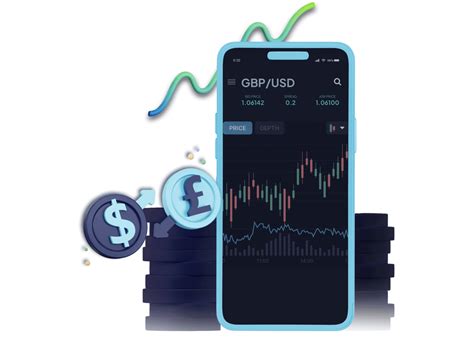Understanding global currencies has become increasingly relevant for Indian investors seeking diversification and new opportunities. Forex in India represents a growing avenue where individuals and businesses engage in currency trading within a regulated framework. The foreign exchange market, influenced by macroeconomic factors, international trade dynamics, and central bank policies, offers potential for both profit and risk. With the Indian Rupee interacting daily with currencies like the USD, EUR, and GBP, recognizing how forex transactions operate in the Indian context is essential. From legal permissions to practical strategies, exploring this space requires clarity on processes, players, and the rules that govern participation.
Regulatory and Legal Framework for Forex in India
Forex in India functions within a tightly monitored system that protects participants and ensures stability in cross-border currency operations. Legal clarity is the foundation of every trade, contract, and remittance decision involving the Indian Rupee and global currencies.
Role of the Reserve Bank of India in Managing Forex Transactions
The Reserve Bank of India plays a central role in shaping the forex landscape. Through the Foreign Exchange Department, it formulates operational directives that authorize or restrict capital flows, remittance limits, and usage of instruments like Currency Derivatives or Spot Contracts. The RBI regulates the INR to USD rate using interventions in the interbank market, maintaining macroeconomic balance.
Key responsibilities include:
Setting foreign exchange limits for individual and corporate transactions
Authorizing dealers and Money Changers for currency conversion and trading
Monitoring capital account transactions to curb illegal outflows
Overseeing macro indicators like Interest Rates and Trade Balance to manage the Rupee's volatility
This function directly influences both retail traders and institutional players such as Foreign Institutional Investors and Exporters who rely on predictable forex frameworks to hedge or speculate.
Understanding FEMA and Its Implications for Indian Forex Investors
The Foreign Exchange Management Act (FEMA), enacted by the Indian government in 1999, governs all forex transactions. Its provisions define what qualifies as legal forex trading and prohibit access to unauthorized offshore brokers. FEMA recognizes the importance of protecting India’s Current Account Deficit and ensures capital movement aligns with fiscal policy.
Key points:
FEMA allows forex trading only on currency pairs involving the Indian Rupee through registered platforms.
Forex Options and Currency Futures are permissible only on exchanges like NSE and BSE under RBI oversight.
Investments outside India are subject to the Liberalised Remittance Scheme (LRS), with caps and disclosure rules.
Violations may attract action from the Directorate of Enforcement, especially in speculative or arbitrage practices.
Permitted and Prohibited Transactions under RBI Guidelines
| Transaction Type | Permitted | Prohibited | Regulatory Body Involved |
|---|---|---|---|
| Currency Futures (INR-based) | Yes, via NSE/BSE | No offshore participation | RBI, SEBI |
| Hedging for Exporters/Importers | Yes | Speculative use by non-exposed entities | RBI |
| Overseas Travel Remittance | Yes, up to LRS limits | Exceeding annual cap | RBI |
| Arbitrage Using Offshore Brokers | No | Violates FEMA | Directorate of Enforcement |
| INR to USD Spot Contract | Yes, through Authorized Dealers | Peer-to-peer or unlicensed trading | RBI, Authorized Banks |
Understanding this framework prevents unintentional violations and ensures that currency transactions remain aligned with national economic priorities.
Compliance Requirements for Individual and Corporate Forex Traders
Forex in India is accessible but demands adherence to a defined compliance architecture shaped by the Reserve Bank of India and FEMA regulations. Individuals and companies must ensure their activity fits the purpose-based nature of allowed forex usage.
Documentation Protocols: Know Your Customer (KYC) compliance is mandatory for all transactions. This includes PAN, proof of address, and bank-verified documents for currency conversions or remittance.
Corporate Forex Trading: Corporates must establish documented exposure, such as export/import invoices or external commercial borrowings, before accessing derivatives like Forward Contracts or Interest Rate Swaps.
Reporting Obligations: Large forex transactions need to be reported to the Foreign Exchange Department. Under the Liberalised Remittance Scheme, declarations must specify end-use.
Tax and Audit: Forex earnings or capital gains from ETF investments abroad are subject to income tax and must be disclosed in filings under Indian law.
Penalties: Misreporting or use of unauthorized brokers can attract penalties under FEMA and could trigger action from the Directorate of Enforcement.
Legal precision in forex participation avoids not only penalties but also safeguards investor capital in a globally volatile environment.

Market Participants and Forex Instruments
Understanding forex in India also means knowing who drives it and what tools they use. Every currency movement, every INR to USD exchange, traces back to participants and their transactions shaped by market exposure.
Authorized Dealers, Money Changers, and Their Role in Retail Forex
Authorized Dealers are banks and financial institutions licensed by the Reserve Bank of India to deal in foreign exchange legally.
They facilitate Currency Conversion, issue Forex Cards, and support Spot Contracts and remittances for retail users.
Category I dealers can offer the widest range of forex services, including Currency Derivatives and Forward Contracts.
Money Changers provide basic exchange services, mostly limited to physical currency conversion for travelers.
Both entities ensure compliance with the Foreign Exchange Department’s operational norms, reducing the risk of illegal Arbitrage or unregulated Forex Trading.
Foreign Institutional Investors and Their Impact on the INR Exchange Rate
Foreign Institutional Investors (FIIs) often act as catalysts in currency movement. When FIIs pour capital into Indian markets, the demand for the Indian Rupee rises, strengthening its value against currencies like the USD and EUR. The reverse—mass withdrawal—depreciates the rupee, triggering shifts in the INR to USD rate. These capital inflows and outflows impact liquidity, Interest Rates, and Trade Balance. FIIs hedge their positions using Forward Contracts or Interest Rate Swaps, and their strategies are closely monitored by the RBI to avoid excessive volatility.
Currency Derivatives and Spot Contracts Explained
| Instrument Type | Key Features | Common Users | Purpose | Exchange Platform |
|---|---|---|---|---|
| Currency Futures | Standardized contracts with fixed maturity | Corporates, Retail Traders | Hedging, Speculation | NSE, BSE |
| Forex Options | Right to buy/sell at a set price before expiry | Advanced Traders, Institutions | Risk Management, Arbitrage | OTC, Exchange-Traded |
| Spot Contracts | Immediate exchange at current rate | Importers, Exporters, Money Changers | Currency Conversion | Banks, Authorized Dealers |
| Forward Contracts | Customized contracts for future delivery | Exporters, NRIs, Large Corporates | Hedging Exposure | Authorized Dealers |
These instruments serve different needs—from travel-related forex to managing risk on international payments. Their use is guided by compliance protocols and RBI norms to ensure legal and safe usage.
How Importers and Exporters Use Hedging Instruments
Importers and exporters in India face constant exposure to currency fluctuations. A surge in the INR to USD rate can inflate costs for importers, while a fall could reduce revenue for exporters. To manage this risk, they turn to hedging.
Forward Contracts: Fix a future exchange rate to lock-in cost or revenue predictability.
Options Contracts: Protect against unfavorable shifts while retaining upside potential.
Interest Rate Swaps: Offset exposure from foreign currency borrowings tied to variable rates.
Currency Futures: Offer liquidity and exchange-based transparency for standardized exposures.
Natural Hedging: Align receivables and payables in the same currency to offset risk.
Such strategic use of instruments ensures stability in cash flow and profit margins.
Use of Forward Contracts and Currency Futures in Risk Management
The use of forward contracts and currency futures has become foundational for both corporates and savvy retail investors managing exposure in forex in India. A forward contract allows two parties to set an agreed exchange rate for a transaction at a future date. This predictability is crucial for large importers of oil, machinery, or technology priced in USD or EUR. Currency futures, traded on platforms like NSE and BSE, offer similar functionality but with greater liquidity and transparency.
Corporates often prefer forwards due to their customization, while futures suit entities that seek speed and exchange-cleared settlements. These instruments mitigate losses arising from Exchange Rate fluctuations, especially during periods of high Inflation Rate or changing Interest Rates. Both methods, when used appropriately and under RBI-approved platforms, form the core of modern currency risk management strategies.
Technical and Fundamental Analysis in Forex Trading
To navigate forex in India effectively, participants must decode the signals sent by market data and macroeconomic indicators. Strategy is shaped not only by what happens but by how it is interpreted.
Reading Economic Indicators: Interest Rates, GDP, and Trade Balance
Interest Rates: Changes set by the Reserve Bank of India can affect capital inflows and outflows, influencing demand for the Indian Rupee and its exchange rate against currencies like the USD and EUR.
GDP Growth: A rising GDP can attract Foreign Institutional Investors, increasing the rupee's strength and affecting trading decisions.
Trade Balance: A persistent deficit weakens the rupee due to higher demand for foreign currencies used in import payments.
Current Account Deficit: This signals imbalance in external trade and income, often impacting long-term trends in the INR to USD rate.
Fiscal Deficit: High fiscal deficits can lead to inflationary pressure, forcing central banks to raise Interest Rates, thereby impacting forex trends.
Impact of Inflation and Fiscal Deficit on the INR to USD Rate
High Inflation Rates reduce purchasing power, prompting the RBI to adjust Interest Rates, which in turn shifts currency demand. When the Inflation Rate exceeds RBI targets, policy responses tighten liquidity, often strengthening the rupee temporarily. A persistent Fiscal Deficit, on the other hand, increases government borrowing, weakening long-term investor confidence in the Indian economy. This puts pressure on the Exchange Rate and influences forex trading behavior.
Understanding Currency Pairs and Volatility Patterns
| Currency Pair | Volatility Level | Key Influencing Factors | Typical Users |
|---|---|---|---|
| INR/USD | Medium | RBI policies, Trade Balance, USD strength | Importers, Exporters, Retail Traders |
| EUR/INR | Moderate-High | Eurozone Inflation Rate, Indian GDP Growth | Hedgers, Forex Option Traders |
| GBP/INR | High | Brexit news, INR Interest Rate expectations | Arbitrageurs, Advanced Traders |
| JPY/INR | Low-Moderate | Yen carry trade activity, RBI interventions | Portfolio Diversifiers |
Volatility drives opportunity and risk. Understanding patterns in currency pairs like INR/USD and EUR/INR allows traders to align strategies with both global and local economic cycles.
Using Technical Charts and RSI for Entry-Exit Strategies
Technical analysis helps traders decide when to enter or exit a position by evaluating past market behavior. Tools such as Relative Strength Index (RSI), Moving Averages, and Fibonacci levels are widely used in retail forex trading in India.
RSI (Relative Strength Index): A value above 70 indicates overbought conditions, while below 30 suggests oversold positions.
Moving Averages: Help identify trend direction. A crossover between short- and long-term averages signals entry or exit points.
Support and Resistance Levels: These act as psychological price zones for major currency pairs like INR to USD or EUR to INR.
Volume Indicators: Spikes in volume often confirm strong directional movement.
By combining these, traders can develop timing strategies that align with volatility conditions and central bank activity.

Role of News Events and Central Bank Announcements
Sudden policy changes or macroeconomic announcements often cause sharp movements in the forex market. A surprise Interest Rate hike by the RBI or dovish stance by the Federal Reserve can alter the INR to USD rate significantly. Exporters and Importers track global and domestic fiscal reports to anticipate shifts. Additionally, inflation data, employment figures, and trade agreements involving the Indian government or foreign economies impact Forex Trading sentiment. Traders frequently position themselves before or after announcements, depending on expected impact and volatility forecasts.
Combining Technical and Macro Indicators for Trading Decisions
A balanced approach to forex in India requires fusing price action with macro fundamentals. For example, a falling RSI and an improving Trade Balance might support a long INR position. Meanwhile, technical resistance aligned with a deteriorating Fiscal Deficit could warn of rupee weakness.
Traders combine macro indicators such as GDP Growth and Inflation Rate with chart patterns, RSI signals, and candlestick formations. This multi-layered view refines entry points, stop-loss levels, and profit targets. It also aids in risk management across instruments like Currency Derivatives and Forward Contracts. When used cohesively, this approach enhances decision quality while staying within RBI guidelines for legal forex exposure.
Platforms, Brokers, and Execution in Indian Forex
Execution determines results. Selecting the right brokers and trading platforms directly impacts access, compliance, and performance in forex in India.
Choosing SEBI-Registered Forex Brokers in India
Only brokers registered with the Securities and Exchange Board of India (SEBI) can legally offer forex trading in India.
These brokers operate under strict guidelines issued by the Reserve Bank of India and the Foreign Exchange Department to ensure transparency and investor protection.
They offer access to Currency Derivatives and INR-based Currency Futures listed on Indian exchanges such as NSE and BSE.
Remittance Service Providers and Authorized Dealers often partner with SEBI-registered brokers for cross-border transaction support.
Choosing a compliant broker helps avoid legal issues under FEMA and minimizes risk of enforcement actions by the Directorate of Enforcement.
Trading via Currency Futures on Indian Exchanges (NSE, BSE)
The National Stock Exchange (NSE) and Bombay Stock Exchange (BSE) provide a regulated space for trading INR-based Currency Futures. These contracts are standardized and designed for both Hedging and Speculation, allowing investors to benefit from volatility in pairs like INR/USD, INR/EUR, and INR/JPY.
| Feature | NSE/BSE Currency Futures | Benefit to Trader | Entities Involved |
|---|---|---|---|
| Currency Pairs Supported | INR/USD, INR/EUR, INR/GBP, INR/JPY | Access to key Forex Rate combinations | Retail Traders, Importers, Exporters |
| Contract Size | USD 1000, EUR 1000, etc. | Low entry barriers | SEBI, RBI |
| Settlement Type | Cash-settled in Indian Rupees | No physical delivery needed | Clearing Corporations |
| Margin Requirement | Around 3-5% | Capital-efficient trading | Brokers, Clearing Members |
| Trading Hours | 9:00 AM to 5:00 PM (IST) | Aligned with global forex sessions | NSE, BSE |
These platforms ensure that trading remains within India’s compliance ecosystem while offering sufficient liquidity for a wide range of participants, from individuals to corporates.

Differences Between Domestic and International Forex Platforms
The gap between domestic and international forex platforms is wide, shaped largely by compliance, access, and available instruments. Domestic platforms like NSE and BSE permit trading only in INR-based Currency Derivatives, as per RBI and FEMA mandates. Leverage is controlled, instruments are standardized, and all transactions are rupee-settled.
In contrast, international platforms offer access to global Currency Pairs beyond the INR, including speculative products like Forex Options, Spot Contracts on minor pairs, and higher leverage. However, Indian residents are legally barred from using such offshore platforms for trading under the current FEMA rules.
These differences create a dilemma for Indian retail traders: follow regulation with limited scope or risk legal penalties for accessing broader tools. The RBI has maintained a clear stance, advocating for safe and structured access within the domestic environment, balancing currency stability with investor protection. For legal and strategic reasons, aligning with domestic systems remains the most secure choice.
Forex Risk Management and Portfolio Integration
Managing exposure in forex in India is less about prediction and more about preparation. Strategic choices can help reduce losses and align currency activity with broader financial objectives.
Hedging Strategies for NRI and Corporate Forex Exposure
Forward Contracts: Used by NRIs and corporate entities to lock in INR to USD exchange rates for future remittances or payments, especially in export-import activity.
Currency Futures: Popular for short-term hedging among corporates trading on exchanges like NSE and BSE.
Natural Hedging: Matching receivables and payables in the same currency to reduce exposure.
Option Contracts: Suitable for NRIs who want downside protection with upside potential in volatile Forex Trading scenarios.
Interest Rate Swaps: Employed to offset rate fluctuation risk tied to foreign currency loans or capital projects abroad.
These tools are widely used by Authorized Dealers, Exporters, and large Importers with material forex-linked obligations.
Diversifying Portfolios Using Currency ETFs and Options
Currency ETFs and Forex Options provide diversification while managing currency risk. Currency ETFs offer exposure to foreign currencies like USD, EUR, or JPY without needing to hold physical currency or engage in direct spot market trading. They are accessible to Indian investors under the Liberalised Remittance Scheme and are ideal for hedging against the falling Indian Rupee or capitalizing on global monetary shifts. Options, when used within the regulatory framework, allow for structured downside protection. Combined, these instruments form a risk-balanced portfolio component amid Exchange Rate volatility and fluctuating Interest Rates.
Using Interest Rate Swaps and Forward Contracts to Manage Volatility
| Instrument Type | Use Case | Common Users | Impact on Volatility Exposure | Regulatory Oversight |
|---|---|---|---|---|
| Interest Rate Swaps | Convert floating-rate liabilities to fixed rates | Corporates, Exporters | Reduces uncertainty in repayments | RBI, Authorized Dealers |
| Forward Contracts | Lock in exchange rates for future transactions | NRIs, Importers | Eliminates rate fluctuation risk | Foreign Exchange Department |
| Combined Hedging | Portfolio-level protection using both tools | Treasury Teams, NRIs | Balances rate and currency risks | FEMA Guidelines |
When structured strategically, these instruments can stabilize cost structures, smoothen cash flow, and insulate against global market disturbances.
The Psychology of Forex Trading: Avoiding Over-Leverage
Volatility attracts traders, but misjudged confidence often leads to over-leverage. Many retail participants underestimate how Exchange Rate swings, combined with leverage, can amplify losses. Psychological traps like revenge trading, confirmation bias, or fear of missing out can lead to poor risk management. Regulatory limits placed by the RBI and SEBI on leverage are designed to prevent cascading losses. Awareness of these emotional patterns, coupled with clear trading rules, helps traders stay rational and consistent. Staying within legal bounds also reduces exposure to penal actions by regulatory bodies such as the Directorate of Enforcement.
Integrating Forex Exposure into Broader Financial Planning
Exposure to forex in India is no longer limited to businesses—it has become a personal financial variable for NRIs, frequent travelers, parents funding overseas education, and investors exploring global ETFs. Financial planners now include currency strategy when structuring long-term portfolios.
A corporate treasury integrates Forward Contracts to safeguard earnings. A family uses hedging to manage tuition payments tied to the GBP. Investors add USD-denominated Exchange Traded Funds to hedge against INR depreciation. These are not isolated choices—they reflect the maturing recognition that currency exposure must align with income flows, liabilities, and investment goals.
As Indian financial markets deepen and cross-border capital flows expand, integrating forex management with broader financial decisions becomes essential for long-term stability and consistent portfolio performance.
Cross-Border Transactions and Remittances
The practical world of forex in India extends to remittances, education expenses, and global investments—driven by people, not just charts. Regulation ensures every transfer follows transparent and lawful paths.
Understanding Currency Conversion and Remittance Rules
Under FEMA, Indian residents can remit up to USD 250,000 annually abroad under the Liberalised Remittance Scheme (LRS), for purposes such as overseas education, medical expenses, and travel.
Authorized Dealers, licensed by the Reserve Bank of India, must process all outward remittances.
Currency Conversion must be conducted through RBI-recognized Money Changers or bank forex desks, ensuring compliance with interbank Exchange Rates and documentation norms.
Transaction Type limits apply—remittances for forex trading or Arbitrage via offshore platforms are strictly prohibited.
Form A2 documentation is required to declare purpose and amount, submitted before conversion and transfer.
Knowing these rules protects individuals from violations monitored by the Foreign Exchange Department and the Directorate of Enforcement.

Remittance Service Providers and the INR-USD Corridor
The INR-USD corridor remains the most heavily trafficked remittance route in India, supporting everything from family support transfers to corporate settlements. Service providers like commercial banks, fintech platforms, and Money Changers enable fast, compliant cross-border payments. Their efficiency is often measured in Exchange Rate competitiveness, transfer fees, and regulatory clarity.
| Provider Type | Key Feature | Typical Use Case | Regulatory Body | INR to USD Rate Mechanism |
|---|---|---|---|---|
| Public Sector Banks | High compliance, moderate speed | NRI remittances, tuition payments | RBI, Foreign Exchange Dept. | Interbank Rate + Spread |
| Private Banks | Digital ease, competitive pricing | Business payments, travel transfers | RBI, FEMA | Market-linked, monitored daily |
| Fintech Platforms | Speed, interface, real-time tracking | Small remittances, family support | SEBI, RBI | Algorithmic aggregation |
| Money Changers | Immediate cash payout (smaller volume) | Tourist conversions, emergency remits | RBI | Walk-in rates, varies by location |
Understanding these channels helps users optimize time, cost, and compliance across remittance goals.
Legal Use of Forex for Overseas Education, Travel, and Investment
Sending money abroad from India is allowed under specific, RBI-sanctioned purposes. Students going abroad can remit tuition and living expenses. Travelers may convert currency for personal use, typically up to USD 3,000 in cash. Investors can deploy funds into Exchange Traded Funds or equities under the LRS.
All such transactions fall under:
Permitted Use Categories: Education, medical treatment, international conferences, foreign equity investment.
Transaction Caps: Adherence to LRS limits, with sub-limits on certain categories.
Documentation: PAN, Aadhaar, passport, and purpose-linked declarations.
Forex Instruments: Spot Contracts, Demand Drafts, Wire Transfers.
Currency Types: Mostly USD, GBP, EUR, JPY depending on destination.
The RBI monitors these flows to maintain balance in the Current Account Deficit and overall Trade Balance while ensuring Indian citizens enjoy financial mobility without policy breaches.
Foreign Exchange Department and Monitoring of Cross-Border Transfers
The Foreign Exchange Department of the Reserve Bank of India functions as the central authority overseeing all external transactions involving the Indian Rupee. It collaborates with Authorized Dealers, Money Changers, and Remittance Service Providers to track currency flows and ensure adherence to FEMA guidelines.
Each remittance undergoes layered scrutiny—from declaration forms at the bank to real-time reporting through AD systems. Suspicious or unauthorized flows trigger alerts and, when necessary, investigations by the Directorate of Enforcement. This structure ensures India's forex outflows align with macroeconomic stability goals, protecting both individual investors and national interests.
With rising digital forex activity, the department also plays a crucial role in regulating fintech integrations, monitoring automated Currency Conversion platforms, and ensuring consistency in INR to USD rate application. Through audits and compliance tracking, it shapes a framework where transparency supports freedom.

Conclusion
Navigating the dynamics of forex in India involves much more than currency speculation. It is a multidimensional space shaped by the Reserve Bank of India’s evolving policy, market behaviors of exporters, importers, and institutional players, and the practical application of financial instruments such as currency derivatives and forward contracts. From legal compliance to strategic decision-making, the environment requires both awareness and adaptability.
Individuals interested in foreign exchange must align their actions with RBI guidelines, interpret movements in economic indicators like inflation or interest rates, and use platforms that are approved and reliable. Whether sending remittances abroad, hedging exposure, or integrating forex strategies into larger financial plans, the opportunities expand with understanding. By mastering both the mechanics and the context of currency markets, participants can confidently take their place within India’s growing presence in global forex.
The Reserve Bank of India sets the framework that governs all foreign exchange transactions. It issues circulars, monitors authorized dealers, and ensures that forex operations align with the Foreign Exchange Management Act (FEMA), safeguarding the integrity of the Indian financial system.
Currency futures and options
Forward contracts
Exchange-traded funds involving foreign currencies
Spot contracts in designated scenarios
Rising interest rates can strengthen the Indian Rupee
Higher inflation may weaken currency value
A widening trade deficit can create downward pressure on the INR
Improved GDP growth tends to attract foreign investment
Hedging: Used by businesses to manage currency risk
Speculation: Traders aim to profit from exchange rate fluctuations
Remittance: Individuals send money abroad for education or personal needs
Currency conversion: Converts one currency to another for travel or trade
Market activity is driven by a mix of:
Authorized dealers regulated by RBI
Importers and exporters managing currency exposure
Foreign institutional investors engaging in capital markets
Remittance service providers facilitating cross-border transfers







